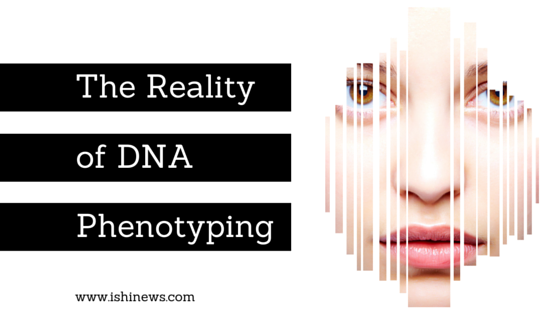It is easy to get excited or frightened about the predictive powers of DNA phenotyping, depending on your perspective. Knowing what genes led to higher intelligence and athletic ability was the first step towards the designer babies of GATTACA. Is this knowledge worth having given the potential for misuse? Going to such extremes with genetic selection makes for a captivating movie, but it can lead to a flawed understanding of the science. The reality of DNA phenotyping is not so scary.
Written by: Greg Emmerich, Promega Corporation
How does DNA phenotyping work?
DNA phenotyping is our attempt at replicating what our bodies do naturally: translating DNA into our physical appearances. It is an attempt because there is rarely a direct correlation between a single gene and a single physical feature. Forensic scientists are currently focusing on determining facial features. Much of our understanding has been gleaned from whole genome studies where scientists compare data from over 7,000 points on participants’ faces to sections of their DNA that contain single nucleotide polymorphisms (SNPs)—that is, sections of DNA that differ by a single letter of the genetic code. Comparing facial maps to genes allows scientists to calculate the probability of physical traits based on the presence of particular SNPs. Predictive algorithms are then used to render an image of a face based on those probabilities.
There is one question that really matters to most people: how well does this all work?
DNA phenotyping is replicating what our bodies do naturally: translating DNA into physical appearances. Share on X
What can DNA phenotyping currently predict?
- Eye color – 77 genes identified
- Hair color – 32 genes identified
- Skin color – 31 genes identified
Dr. Manfred Kayser neatly summarized the specific genes and their corresponding references in a single table from his 2015 paper. These three pigment traits are a good start, but they are a far cry from generating an accurate image of a face. Determining ethnicity is currently accurate at broader levels like European, African and so on. Dr. David Ballard has more to say in this video:
What will DNA phenotyping be able to predict in the future?
- Age – we can broadly detect between 20-year age groups, but more precise measurement is more than a few years away. DNA methylation may be one short term option to improve the predictive power to 3–5 year age groups.
- Height – height is complicated; the more SNPs we look at, the more likely we can explain height variance. Currently this is up to 29% accuracy. Improvement beyond identifying someone as extremely tall or short should happen in the distant future.
- Baldness – early-onset baldness has been linked to 12 genes and most significantly to one region of the X-chromosome. Late-onset baldness, which is more common, is harder to identify but there haven’t been many studies in the way of this. This could improve in the near future.
- Facial structure – many DNA variants determine facial morphology. Five genes have been determined to play a role, but it will take considerably more research to improve facial reconstruction. This is likely something for the distant future.
What will DNA phenotyping be able to predict in the future? Share on X
Intelligence, athletic ability and beyond are just that—beyond. These are not coming anytime soon. The same knowledge that could lead to an understanding these complex traits could also lead to a better understanding of complex disorders like obesity, high blood pressure, diabetes, cancer and more (unlike “simple” diseases caused by a single gene, like cystic fibrosis). It is important for skeptics to stay vigilant of potential misuses of scientific knowledge, but is it really worthwhile to halt progress on these important fronts when we already have numerous tests for intelligence and athletic ability at schools and playgrounds?
For more on Phenotyping, check out these resources:
- Phenotyping: What Can and Should We Predict?
- Generating a Suspect’s Mugshot Solely From DNA
- Improving DNA Phenotyping for Forensics
- Under the Microscope with Ellen Greytak
Learn more by attending the DNA phenotyping workshop at ISHI
Much progress is being made in the way of converting possibilities to realities with DNA phenotyping. The International Symposium on Human Identification is holding a workshop about DNA phenotyping on Sunday, September 25, 2016, from 1–5 pm. Dr. Manfred Kayser and Dr. Eran Elhaik will be the featured speakers during the workshop.
Greg Emmerich is a science writer at Promega striving to combine creativity with science. He lives off adrenaline rushes from skiing and discovering new music. He received his B.S. Microbiology and M.S. Biotechnology degrees from UW Madison.
WOULD YOU LIKE TO SEE MORE ARTICLES LIKE THIS? SUBSCRIBE TO THE ISHI BLOG BELOW!


